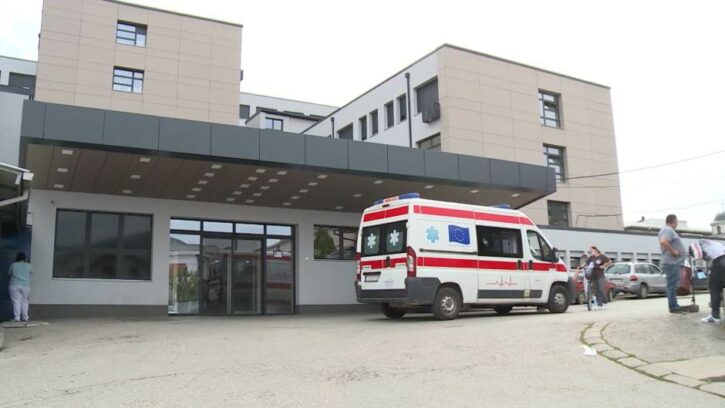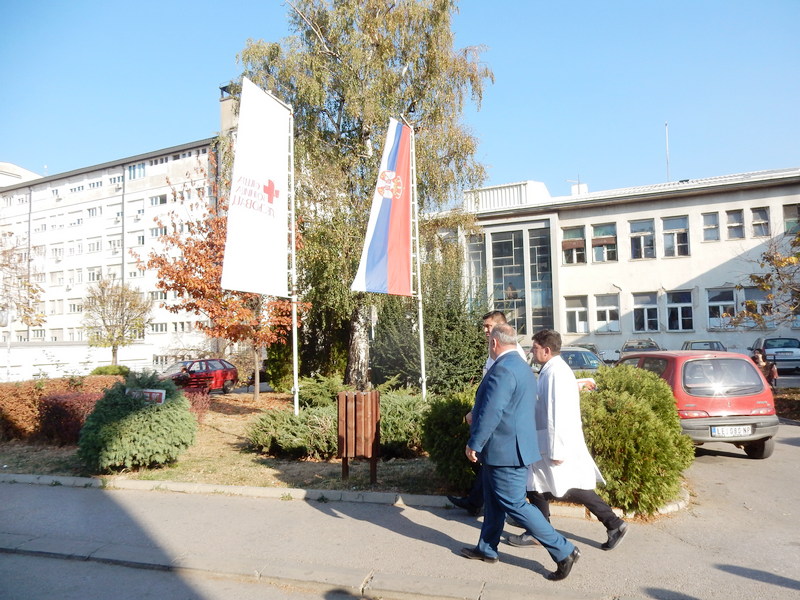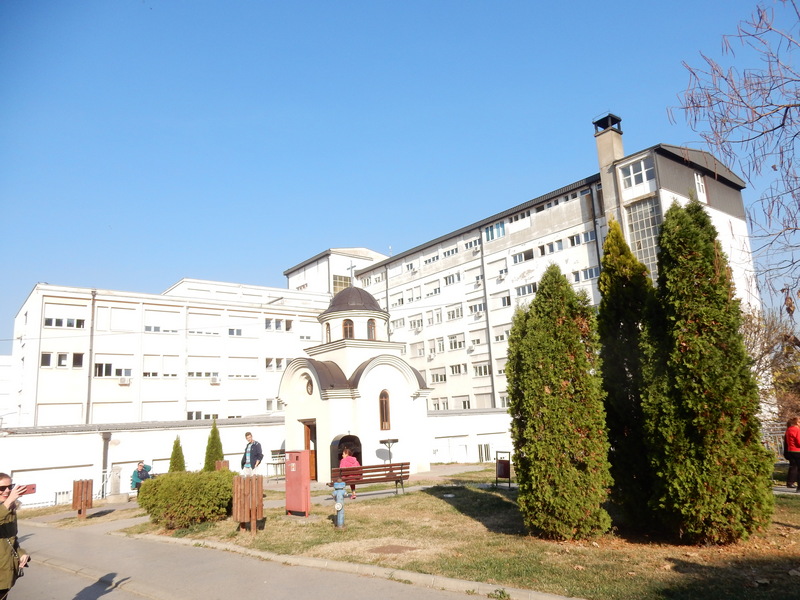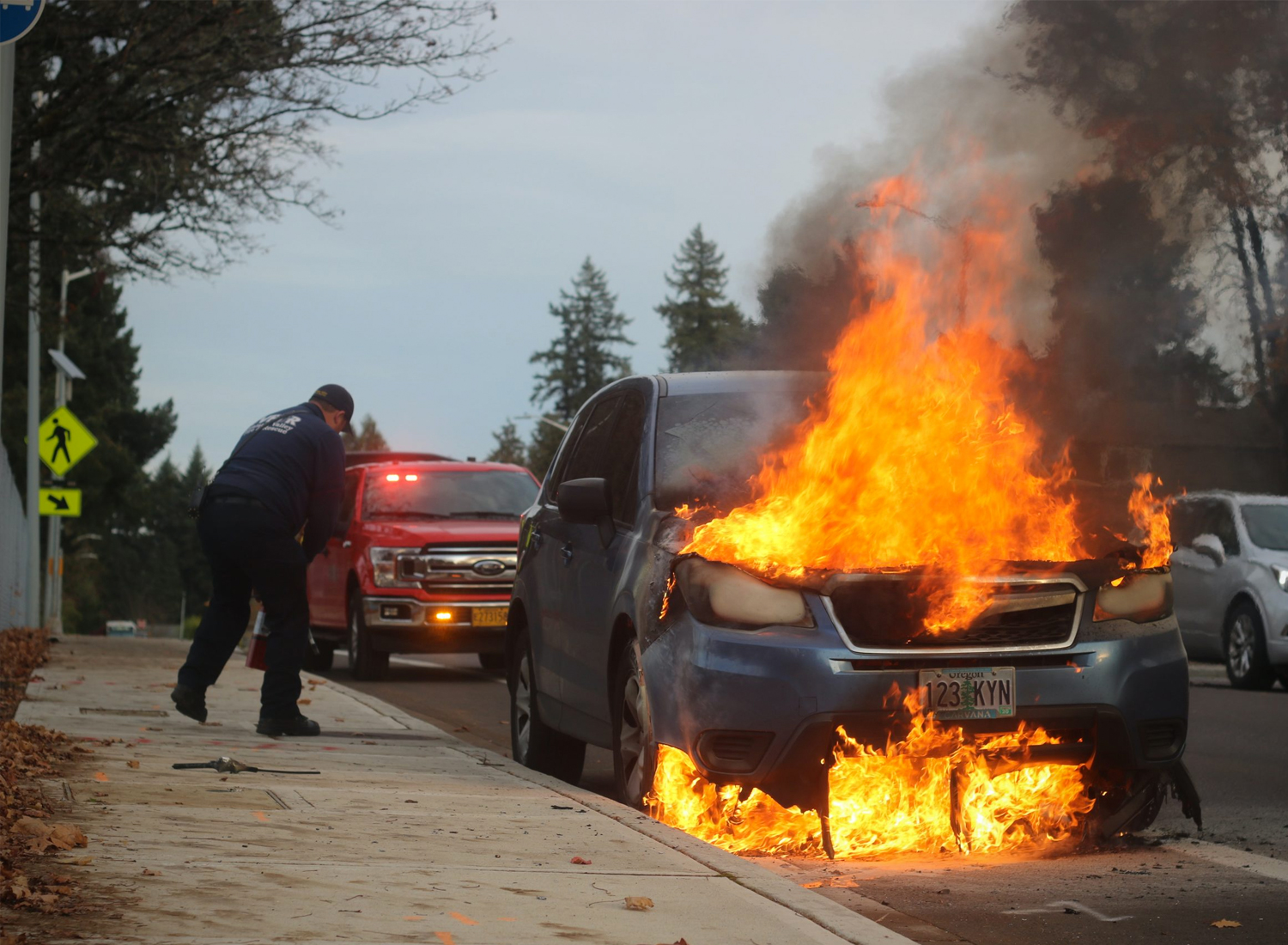


Designing - Hospital complex Leskovac
From the archive of projects we have done, we will single out one interesting, demanding and complex project that combines the latest technologies with the aim of automating the building and achieving the highest possible level of energy efficiency.
The subject of the telecommunication and signaling installation project was the reconstruction and extension of the main building of the hospital complex, with a gross area of slightly more than 22,000 m2.
With the reconstruction and extension of the existing facility, it was necessary to equip all the functional units of the facility and bring them to their intended purpose by applying the most modern technologies in accordance with the project assignment, valid regulations and standards.
As part of the Telecommunications and Signaling Installations project for the purposes of reconstruction and extension of the object in question, three groups of systems were processed:
- Fire protection systems
- Technical protection systems
- Systems for communication, voice and data transmission
The concept of the technical solution is based on system integration, automation of the most important functional units and processes in order to achieve the highest possible degree of energy efficiency and the simplest possible management of the object at the level of all technological systems.
The integrated system for monitoring and management in one user interface combines the monitoring and/or management of the facility's technical systems: lighting, air conditioning, heating and cooling (KGH), energy management, as well as the most important systems for facility security and communication, such as fire alarm and fire extinguishing systems aerosols, sound systems and notifications, intercom systems, VOIP telephony.
By working on one software platform, the available human and technical resources are used in the most efficient way, which results in the rationalization of the total costs of maintenance and management of the facility.
For the purpose of central supervision and management in the facility of the main building of the hospital, a monitoring room is planned, which will be equipped with 2 workstations (integrated system and video security) and 2 video walls with 4 monitors each for monitoring all the parameters foreseen at the level of the entire facility. On the other hand, 24-hour physical and technical security personnel are expected to be on duty in the porter's room, who will be assigned the rights to monitor and manage only certain parts of the system at the local workstation.
The functionality of the integrated system is reflected in:
- energy efficiency of the complex,
- efficient maintenance,
- efficient service to the end user,
- the highest level of security (eg interaction of fire alarm and access control systems with video surveillance).
The mentioned functions create a feeling of maximum comfort, pleasantness, commitment and security for the end user with effective rationalization of business costs.
The integrated surveillance and management system has been upgraded with advanced video analytics servers in order to provide the highest level of security functions through advanced image analysis functions and deep learning algorithms that enable learning and improving the functionality of the software based on the analysis of past events. The envisaged solution has unlimited possibilities in terms of scalability and individual adaptability to tasks, allocation of resources based on changes in the number and weight of tasks, routing of events within the system. The access control system will be integrated with video surveillance in such a way that every alarm situation will be accompanied by an image from the nearest camera, the start of recording and recorded as metadata for a faster search of the recordings later. By visualizing all doors under access control, the statuses of those doors and the corresponding controllers will be graphically monitored.
By clustering the components of the subsystem, in case of failure of one of the core components of the subsystem, it is possible to ensure continuous operation by using the Failover component. Administration of the system and user rights/privileges is centralized. For additional personalization of the software, it is possible to create arbitrary scenarios in the security system through macro commands, macro events and through scripts. The subsystem has the possibility of automatic or scheduled creation of a backup copy of videos on a separate Video backup server, as well as synchronization of videos saved on the server, with videos on memory cards of cameras or on NVRs.
Within the framework of the fire protection system, the following are provided:
- Automatic fire detection and alarm system
- Automatic fire extinguishing system with aerosols and fire extinguishing management in the server room, UPS rooms, floor rack rooms and electrical cabinets
Technical protection systems include the following:
- video security system
- access control system and working time records
- IP video intercom system
- sound and notification system
Through the systems for communication, voice and data transmission, the following are foreseen:
- electronic network for hospital information system, voice and data transmission
- electronic network for the integration of safety and security systems
- IP telephone communication system
- IP internal hospital communication system (intercom)
- patient roll call system (queue system)
- hospital SOS signaling system
- accurate time distribution system
- TV signal distribution system
- multimedia presentation system in meeting rooms
Due to the specific purpose and sensitive nature of the facility where a large number of bedridden patients are housed, due to their safety and difficult evacuation conditions, the project foresees an increased level of fire protection. In addition to the automatic system for fire detection and alarm, a system for extinguishing fires with condensed aerosols is planned in areas where there is the greatest possibility of an initial fire, namely: electrical cabinets, UPS rooms with batteries, rack cabinets, server room. Aerosols were chosen as an extinguishing agent because they are a very effective and reliable solution for extinguishing all types of fires: class A (solid fuels), class B (flammable liquids), class C (flammable gases) and class F (cooking oils). Aerosol generators must have all the necessary certificates confirming their compliance with valid European and world standards in this area, as well as certificates confirming safety for people and electronic equipment.
The telephone switchboard was designed based on the latest trends in the field of private telephone switchboards with the aim of integrating the mobile telephones of employees with the home telephone switchboard and using them as home telephone switchboard terminals. This kind of integration implies the use of the IP and WiFi network included in the project for the transmission of signaling, voice and video signals to the client application installed on employees' mobile phones. The WiFi network should be set up to prioritize IP traffic for the needs of telephone communication, taking into account the fact that voice communication is sensitive to packet loss and packet forwarding delays. Support for iOS and Android operating systems on mobile phones of newer generations is planned. In order to ensure the security of communication using applications on mobile phones, the use of signaling and voice signal encryption is foreseen according to the "end to end" principle.
This project within the facility envisages the installation of voice notification, alarm and ambient sound systems, in accordance with the needs of the facility and the standards governing this area (EN54 and EN50849). The secondary purpose of this system will be the production of patients as part of waiting lines in certain zones, which will be achieved by integration with the intercom system via the SIP protocol.
The mutual integration of the public address system, IP telephony and intercom should enable calling between the terminals connected to the home telephone exchange and the intercom system, as well as the sending of voice messages from the terminals connected to the telephone exchange to the sound system zones in accordance with the functional requirements of the user.
In the hospital, the installation of modern hospital SOS signaling is planned, which includes sound and light signaling of SOS calls and voice communication. The system is designed to enable the following types of signal and voice communications:
- patient - nurse
- patient - non-medical staff
- nurse - nurse
- nurse - doctor
- medical staff - non-medical staff
The entire system is organized by medical departments, which will be interconnected.





